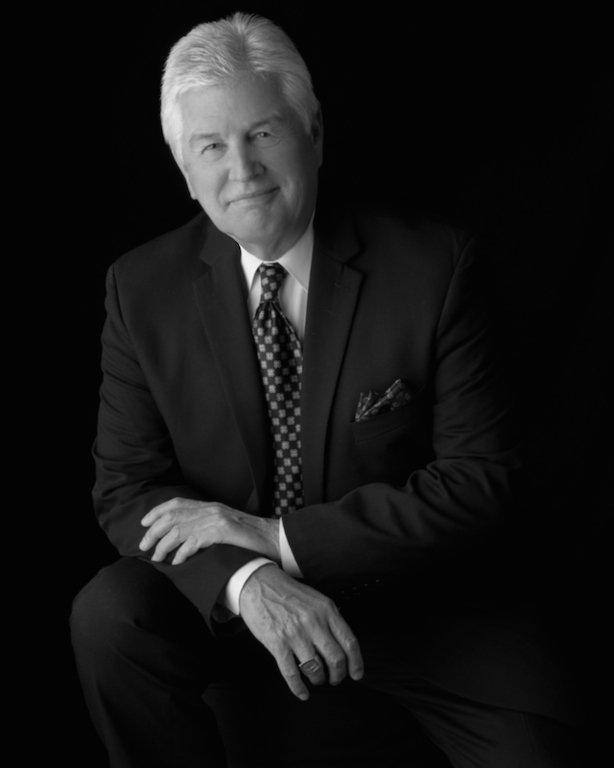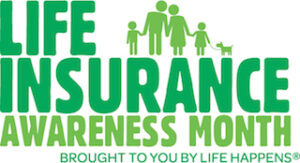When you sit down and talk to a life insurance advisor these days, you may hear complaints about the available product offerings, but those complaints don’t typically focus on a lack of variety.
The product development teams at the carriers sometimes seem bent on providing the widest array of products with an almost endless selection of bells and whistles. For some of today’s younger advisors, I’m sure that it’s hard to even imagine a time when they weren’t able to offer their clients such a wealth of product options to fit their needs.
Although it may seem like ancient history, some of us can remember the days when there were essentially two options for life insurance – term and whole life. And for others of us, it may seem somewhat amazing that there are still some very productive and effective advisors who focus a lot of their time and attention on selling whole life. Even in light of all the “conventional wisdom” that says that whole life products are much more difficult to sell, more expensive to buy, and more time-consuming to adequately explain, there are still advisors who focus on whole life sales and who continue to succeed at doing so.
In this report, I will share the thoughts and some very practical ideas from two such advisors, Brian H. Ashe, CLU, (shown at right) of Brian Ashe and Associates, Ltd., and Adelia C. Chung, CLU, ChFC, of Spectrum Wealth Management, LLC. Both are not only past presidents of the Million Dollar Round Table, but both are also big believers in the value and importance of whole life.
Why the focus on whole life?
Many of the really top-notch whole life advisors I know have an interesting story in their background that is a kind of spark for them to continue doing such a good job in selling whole life. I was curious about whether there was some kind of motivating factor for Mr. Ashe and Ms. Chung that got them selling whole life, and why whole life continues to be such an important part of their businesses.
For Mr. Ashe, whole life provides consumers with an important and valuable option. “Whole life insurance is another arrow in the quiver. My sense is that American consumers like choice, and a product that provides guaranteed death benefits, guaranteed cash value, and a guaranteed premium is desirable for many buyers. A now 73-year-old neurosurgeon client, who bought whole life I recommended to him more than 38 years ago, told me recently, ‘It was tough at the time, when I was just starting out my practice, but now I’m really glad I paid those premiums. Dividends now pay all of my premiums, so I don’t have to reach into my retirement income. My cash value and death benefits continue to grow, and my family will always get more than I paid, free of income tax. Who doesn’t like that?’”
Ms. Chung has a long history with whole life, dating back to when she was a young girl. “I grew up in a life insurance family. At a very young age, I heard stories about the benefit of life insurance and the impact it can make for a family and organization. My parents purchased life insurance policies for us as young children. The down payment of my first condo purchase came from my whole life cash values. So, when I entered the life insurance business, educating prospects about the benefits of a whole life policy was something I believed deeply.
“As a 30-plus year veteran of the business, I have seen whole life products perform as expected. Life is unpredictable, but whole life is not. A whole life policy does what it was designed to do. It provides a foundation if one were to live too long, die prematurely, or become disabled. A whole life policy does not expire. It has a guaranteed value, and premiums don’t increase as one gets older. It provides a benefit one can count on,” Ms. Chung said.
Whole life model hard to improve
With the years of experience these two have had, no doubt they’ve seen the product evolve, as well as its strengths and weaknesses. In light of that experience, I asked what they’d advise an insurance carrier on how to improve on today’s whole life model, if they had that opportunity.
Ms. Chung indicated she was quite satisfied with today’s whole life. “I think the products today are good,” she said. “I can’t think of anything I would improve on.”
Mr. Ashe, though, took did have some thoughts on improvement. “I really don’t know how much more companies can do to improve whole life policies. They already have cash value enhancement riders, guaranteed insurability riders, accelerated death benefits, long-term care riders, waiver of premium benefits, etc. And the truth of the matter is that the Internal Revenue Service really participates in the ‘design’ business because of its definitions of what a life insurance policy is or can be. Companies don’t have much latitude to offer improved policies that don’t pass IRS muster.
“One thing they could do is improve the ‘story telling.’ During the period from 2000 to 2010, one major mutual company ran an ad that showed how a whole life policy had returned about five times what the S&P 500 had returned in the same time period. Interesting factoids and product ‘framing’ like that can make people think about our products differently – and more favorably.”
Finding the premium dollars
It was obvious that these two had strong feelings about the value of whole life, so I zeroed in to try to get a practical view of how they actually sell the product. I was curious as to whether there were certain demographics, income levels, or professions that they focus on, and if so, how they actually do that.
Mr. Ashe told me, “I don’t have a specific whole life prospecting method. We look for people who have the need for life insurance, and then we match the product to the need. If the prospect has a permanent need, we will suggest whole life or some form of universal life.
“Many younger prospects have a permanent need but don’t have the extra premiums needed to pay for the benefits of a whole life policy. We recommend term life then, but with the admonition that they should convert to permanent life insurance as soon as their financial capability permits. We do so because, for most people, the need for life insurance does not go away, it just ‘morphs’ from ‘dependency needs’ to ‘liquidity needs’ or ‘estate conservation needs’ or ‘charitable needs,’ etc.”
Ms. Chung said that she focuses on benefits no matter who she’s talking to. “I explain the benefits of a whole life policy to all of my prospects. For an individual with the ability to save, a whole life policy offers tax-deferred growth, tax-free access, and an income-tax-free death benefit. For the individual who currently does not have the ability to purchase a whole life policy, it is important that he or she understand the opportunity. Often, once a prospect understands the benefits, he or she will reprioritize and ‘find the premium dollars.’”
See also: The report that can make permanent life an attractive asset class
To comment on this article, visit this thread:
What other product can do this?
So, once the producer is actually talking to a prospect, what approaches work well in effectively telling the whole life story? Ms. Chung emphasizes whole life’s uniqueness.

“Whole life insurance is an exceptional product. There is no other product like it,” Ms. Chung said. “Life is unpredictable; it happens. One of three possibilities exist: We may live a long time, die prematurely, or become disabled. Whole life insurance is a financial foundation that will provide regardless of which of the three occurs. If our financial foundation is strong, it enables us to deal with life when it happens. Alternatively, when our financial foundation is weak, dealing with ‘life’ is compounded.
“Having a strong financial foundation enables us to enjoy retirement, provide the financial means so our dreams and goals can be fulfilled, and if we do become disabled, our plan can be self-completing,” Ms. Chung said. “I ask my prospect, ‘What other product can do this for you?’”
Mr. Ashe likes to use power phrases. “I have a couple of favorite power phrases favoring whole life or permanent insurance:
1) “Can you think of any circumstances when someone has died where the beneficiaries would have been better off without the life insurance?”
2) “There are only two ways to make your financial dreams come true – live long enough or insure your life.”
No apologies necessary
Certainly there are objections to whole life, and in fact, among many younger advisors, there seems to be an objection to even presenting whole life. There continues to be talk of the product being “too expensive” or “old-fashioned.” I asked how they weigh in on that, and what they would tell the younger advisor who hears those kinds of objections.
Mr. Ashe responded by saying, “First, I think I would reiterate to a younger advisor that choice is a pretty universal desire of most consumers. So, I would not ‘pre-underwrite’ a prospect’s needs and avoid raising the option of funding his or her life insurance needs with whole life.
“Second, after 45 years in the business and experiencing many new product releases and economic environments, I would suggest that they really never have to feel ‘bad’ about selling whole life because of its guarantees and long-term ‘inevitable gain.’ It may not be quite as ‘cool,’ but it will be in force when your prospects die and you never have to apologize for the product.
“And third, when it comes to compensation, the permanence of the product and its more predictable cash flows to the insurer also allows for better renewal compensation and service fees to the advisor – an important element in the young advisor’s survival and the ability to maintain a lifelong relationship with clients.”
Ms. Chung added these succinct comments: “Anyone who would say those things is misinformed. Expensive? It is an exceptional alternative savings vehicle in addition to all the other benefits it provides. Old-fashioned? It has withstood the test of time. It works.”
Support LifeHappens
Mr. Ashe concluded by saying, “I would like to see more industry support for organizations like LifeHappens. And in the interest of full disclosure, I am a past chair and current treasurer. It is pretty much the single industry voice educating consumers about life insurance and the value of an advisor. LifeHappens has proven that well-designed messaging works in raising awareness and moving both insurance companies to sell and consumers to buy more life insurance. And that includes whole life!”
I don’t think Mr. Ashe will get much argument about the importance of messaging, either on a broader industry scale or in the advisor’s one-on-one interactions. These two experienced advisors have delivered strong messages about whole life throughout their careers, and those messages are apparently still resonating today.
See also:
To comment on this article, visit this thread:
Brian H. Ashe, CLU has been in the insurance and investment business since 1969, assisting clients with life, health, disability, annuity, and equity products. His work is concentrated in estate conservation, retirement planning, employee benefits, and business insurance strategies. Mr. Ashe is the Past President of the Million Dollar Round Table. A popular speaker who is frequently quoted as an industry expert by the media, he has addressed groups in 38 states and 15 foreign countries and writes the “Back Page” column for Advisor Today magazine. In 2012, he was awarded the John Newton Russell award, the life insurance industry’s highest recognition. He is also president of Brian Ashe and Associates, Ltd., an insurance sales organization. Mr. Ashe is he current Treasurer of the Life and Health Insurance Foundation for Education, and he is the Past President of the Chicago Chapter of the Society of Financial Service Professionals. The father of four children, he resides in Naperville, Ill.
Adelia C. Chung, CLU, ChFC, is the owner of Spectrum Wealth Management in Honolulu. She has been a life member of the Million Dollar Round Table for 30 years, a member of The Court of the Table for 23 years, and a member of The Top of the Table for 10 years. In addition, she served as MDRT president in 2005. Among many other honors, she was named Hawaii State Life Insurance Professional of the Year in 1988. She has held many positions of leadership throughout the life insurance business, and she speaks to both national and international audiences on a regular basis.
Charles K. Hirsch, CLU, is contributing editor of Insurance Forums. He is also the president of Hirsch Communications Consulting, LLC, a communications consulting operation in Florissant, Missouri. For many years, Chuck was the editor and publisher of Life Insurance Selling magazine and wrote the monthly column, What’s Going On in the Life Insurance Business. From 1999 to 2008, he was the publisher of several of the leading industry magazines in the life insurance, property/casualty insurance, and mortgage markets. These days, Chuck’s firm specializes in the development and execution of many kinds of communication strategies, particularly in the financial services business.













